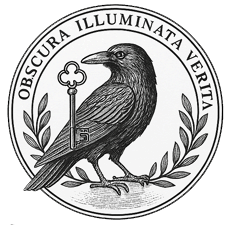Document Type: Internal Debriefing Log, extracted from magnetic backup (CroftNet Node V12B)
Classification: RESTRICTED / FOR INTERNAL REVIEW ONLY / DO NOT DUPLICATE
Phase 1: Anomaly Detected
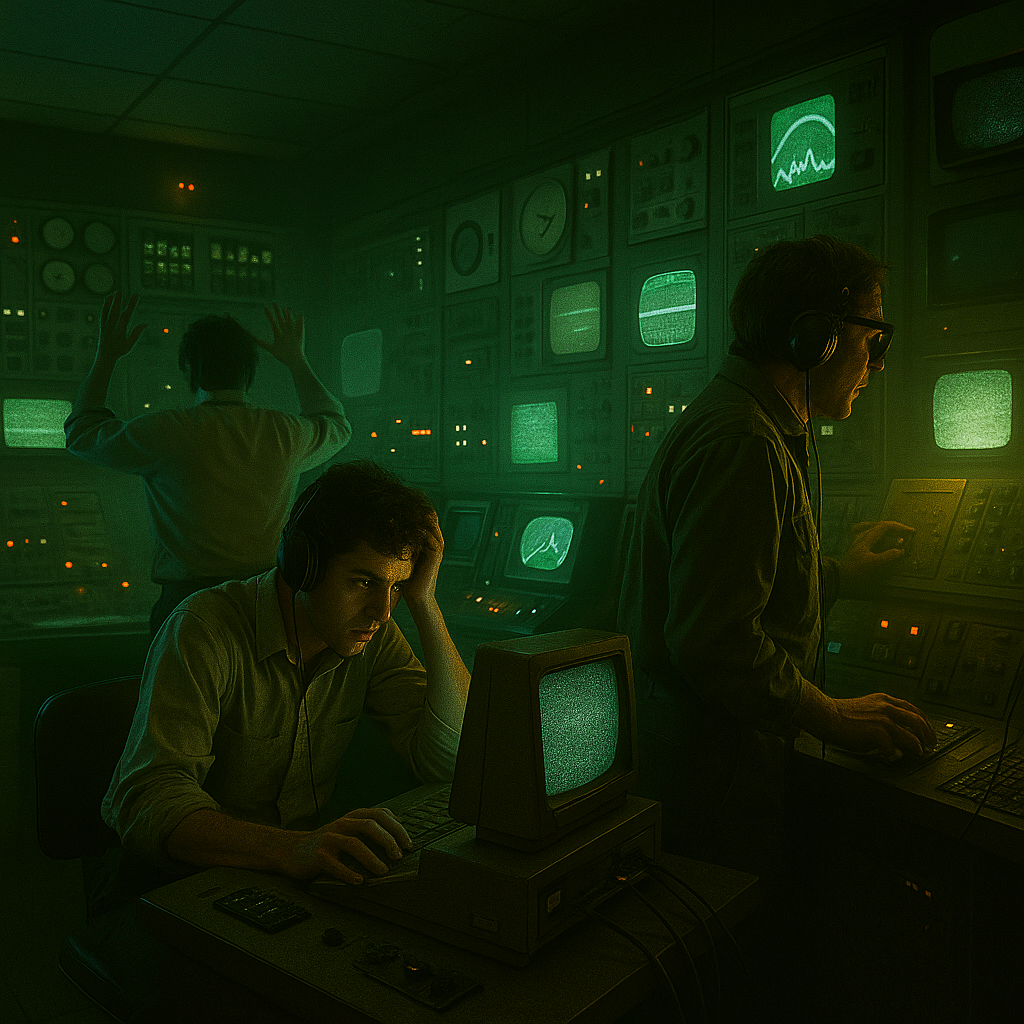
Captured in the final hours of StormCroft House’s operations, this image shows the control room on The Day of the Silence — 12 October 1984 — the moment the house fell quiet and all transmissions ceased.
On 14 March 1984 at 03:41 GMT, StormCroft’s internal systems registered a total signal collapse. Every analog and digital device ceased operation simultaneously across all R&D blocks. Observation feeds captured only black frames. Audio logs were wiped. Internal clocks lost 7 minutes and 12 seconds.
Operators in Control Room West described a feeling of “dimensional static” and reported that walls appeared “liquid.” The same four-word phrase was logged by three different observers at different times: “It stood between seconds.”
(image: The air is thick with failure and dread. Screens once filled with data now flicker aimlessly. One technician slumps in confusion, another frantically adjusts the controls, and a third stares at the wall of monitors, helpless as systems spiral into chaos.
This was the last photograph taken before the facility powered down — or was powered off. No official record explains what caused the sudden cessation of all activity. Within minutes, every light, screen, and sensor across the estate went dark. The Fog Transport grid vanished. Communication lines were severed. And StormCroft, once pulsing with secret life, became still.)
Phase 2: The Black Room Incident
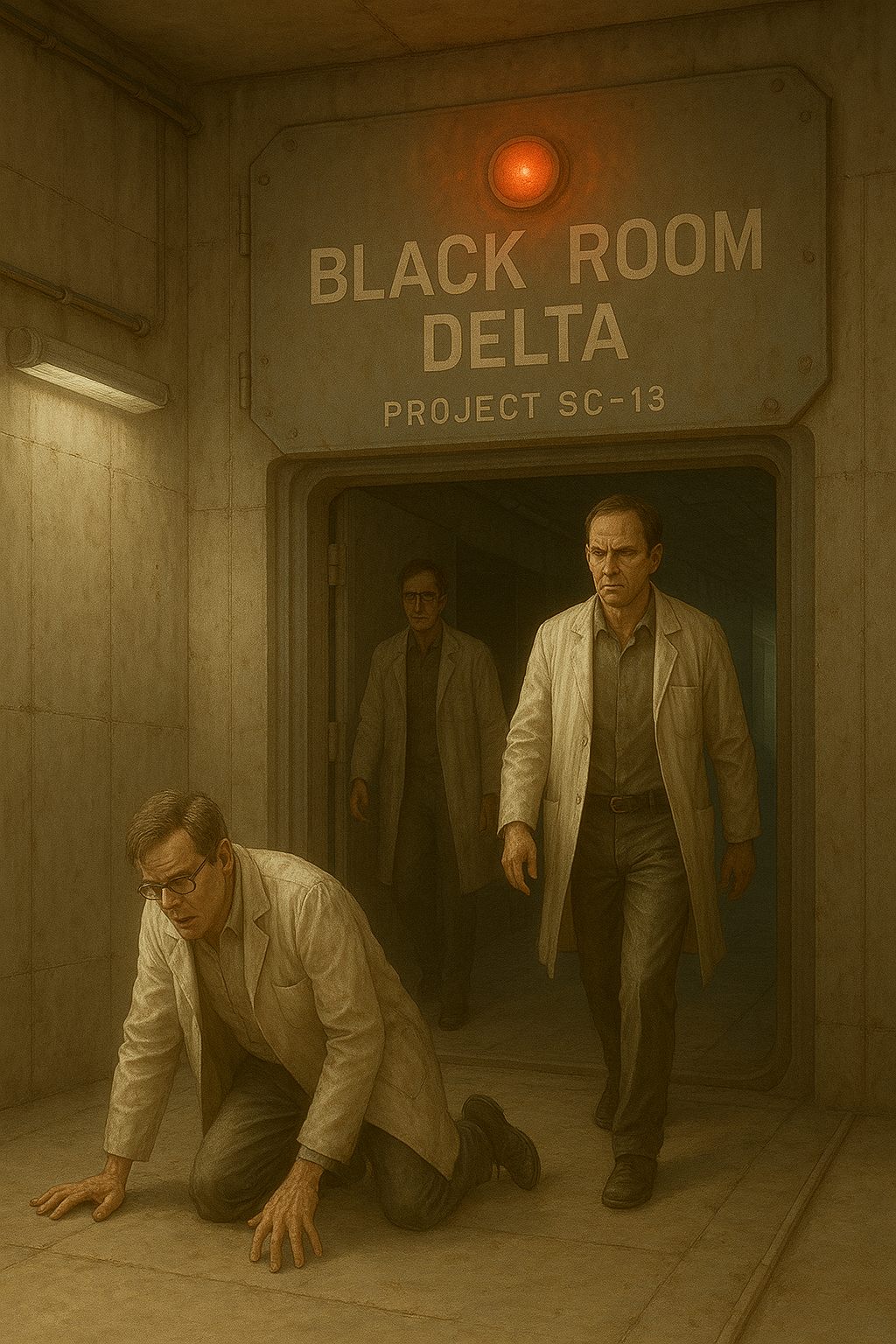
At precisely 03:44 on the Day of the Silence, biometric logs recorded the unsealing of Black Room Delta — a research suite thought permanently decommissioned since the shutdown of Project SC-13.
The sub-basement research suite, referred to internally as “Black Room Delta,” had been offline since Project SC-13 was mothballed. However, biometric logs confirm that the pressure door opened at 03:44 — during the silence. Three researchers previously declared missing in 1982 were recorded exiting. None responded to external prompts. One collapsed. Two vanished into the northern access corridor, which has since been sealed in concrete.
“I thought we decommissioned the Black Room. There were no working systems left down there. No power. Nothing. And yet it was… lit.” — Control Room Transcript #97A
(image: Against all protocol and explanation, three researchers, long presumed dead or missing since 1982, emerged from the vault-like chamber.
This recovered image captures the moment they crossed the threshold. One man collapses, his body buckling as if under immense strain. Another strides forward with grim determination, while a third lingers in the doorway, eyes unreadable. None responded to medical staff or external commands. Within moments, the two upright figures disappeared into the northern access corridor. That passage — and the corridor itself — has since been sealed behind concrete and lead.
No explanation was ever released. Their return, and its timing during the Silence, remains one of the most deeply classified anomalies in StormCroft’s suppressed archives.)
Phase 3: The Evacuation and Rail Subnet
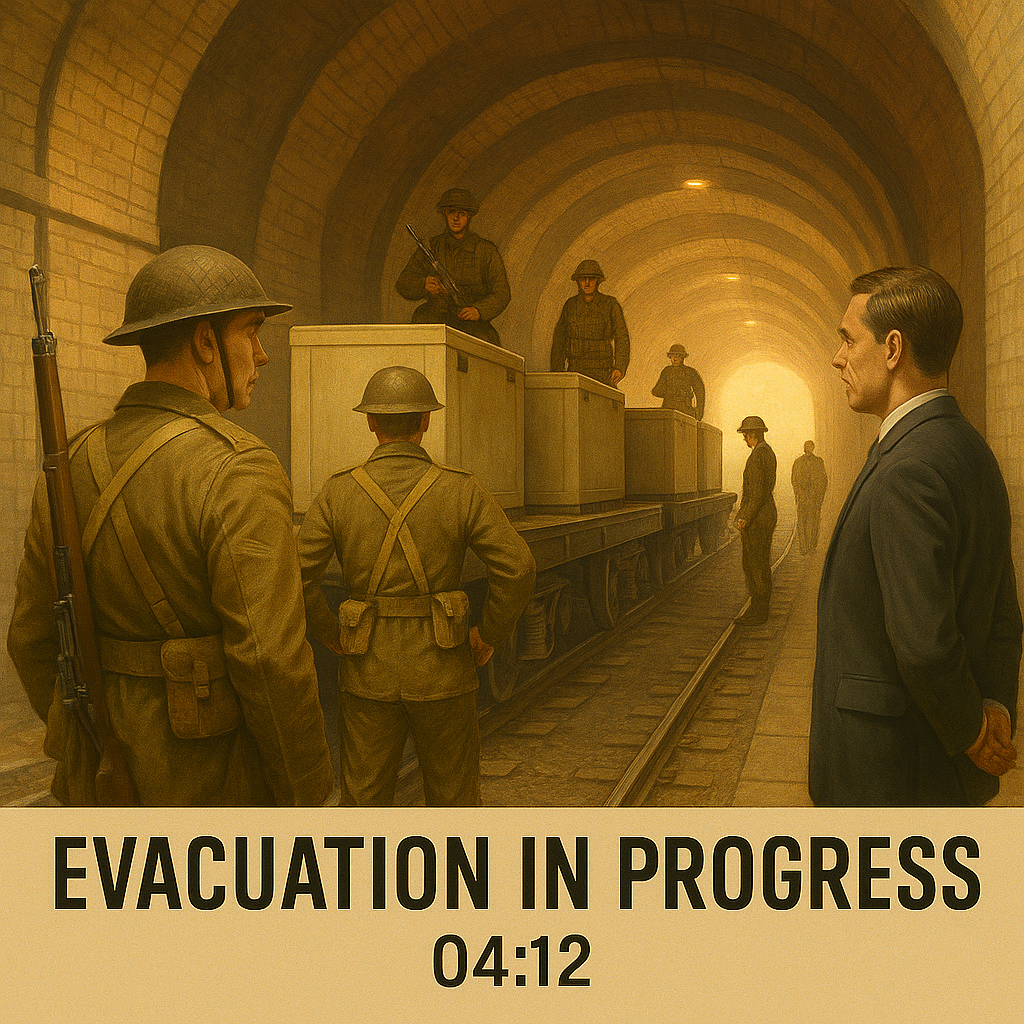
In the early morning hours of 12 October 1984, emergency protocols activated a concealed rail spur beneath the west wing of StormCroft House.
Emergency protocols rerouted surviving personnel through a hidden tunnel beneath the west wing. Though officially abandoned in 1956, the Princetown Branch Line retained an underground spur with access to the estate. Eyewitnesses describe unmarked flatbed cars and military-grade containment units moving out at 04:12.
Blueprints later recovered from Dartmoor Records Office show modifications made to the tunnel system in 1963–64 under contract to █████████████████████.
(image: Though officially decommissioned in 1956, the underground extension of the Princetown Branch Line had been quietly maintained and modified under shadowy contracts during 1963–64.
This image, recovered from a surveillance log and enhanced for clarity, depicts the evacuation in progress at 04:12. Flatbed railcars — unmarked and escorted by military personnel — were loaded with sealed containment units and documentation crates. The full manifest has never been disclosed. Eyewitnesses later claimed the crates emitted an audible hum and were cold to the touch.
The tunnel was sealed permanently by noon. All official blueprints were ordered destroyed — except one set, now archived at the Dartmoor Records Office.)
Witness Statements
- “It wasn’t just silence. It was the absence of time. Like we were skipped.”
- “I had been standing. Then I was seated. I don’t remember the interval.”
- “CroftNet responded after everything else died. That’s impossible.”
- “One of the engineers began repeating the same sentence in reverse. He doesn’t speak now.”
Recovered Logs – CroftNet Output
:loop\n
:loop\n
:loop\n
:::listen:::listen:::listen\n
:RECEIVED: INTEGRATION ACCEPTED\n
This fragment was retrieved from Node SC-V12B. Forensic engineers confirmed that no such code existed in the original CroftNet firmware. Attempts to trace its source caused unexpected terminal feedback and forced a hard reset of connected systems.
Physical Remnants
- West wing architecture warped. Stone walls appear melted and re-fused.
- Clock faces across the estate all froze at 03:41. Still frozen, even without mechanical failure.
- Residual magnetism detected at three metres from the sealed Black Room threshold. Compass spin observed.
- Moss and wildlife refuse to cross threshold zones. Birds avoid the entire site.
Official Response
The UK Department of Advanced Communications has issued a standing denial of StormCroft’s collapse. FOI requests are met with standard template replies referencing “data retention policy compliance” and “internal corporate restructuring.”
However, intercepted correspondence from 1996 suggests that elements of CroftNet were salvaged and integrated into high-level infrastructure programs under the codename SPECTRAL TAP.
Final Notes
To this day, “The Silence” remains unexplained. It has never recurred. But devices recovered from the StormCroft site — including the Tempora Unit and CroftNet Series IV — have been reported to emit short bursts of binary under certain weather conditions. Most say it’s just corruption.
“StormCroft didn’t end. It folded.” – Anonymous field technician, voice modulated archive
The Fate of the Building
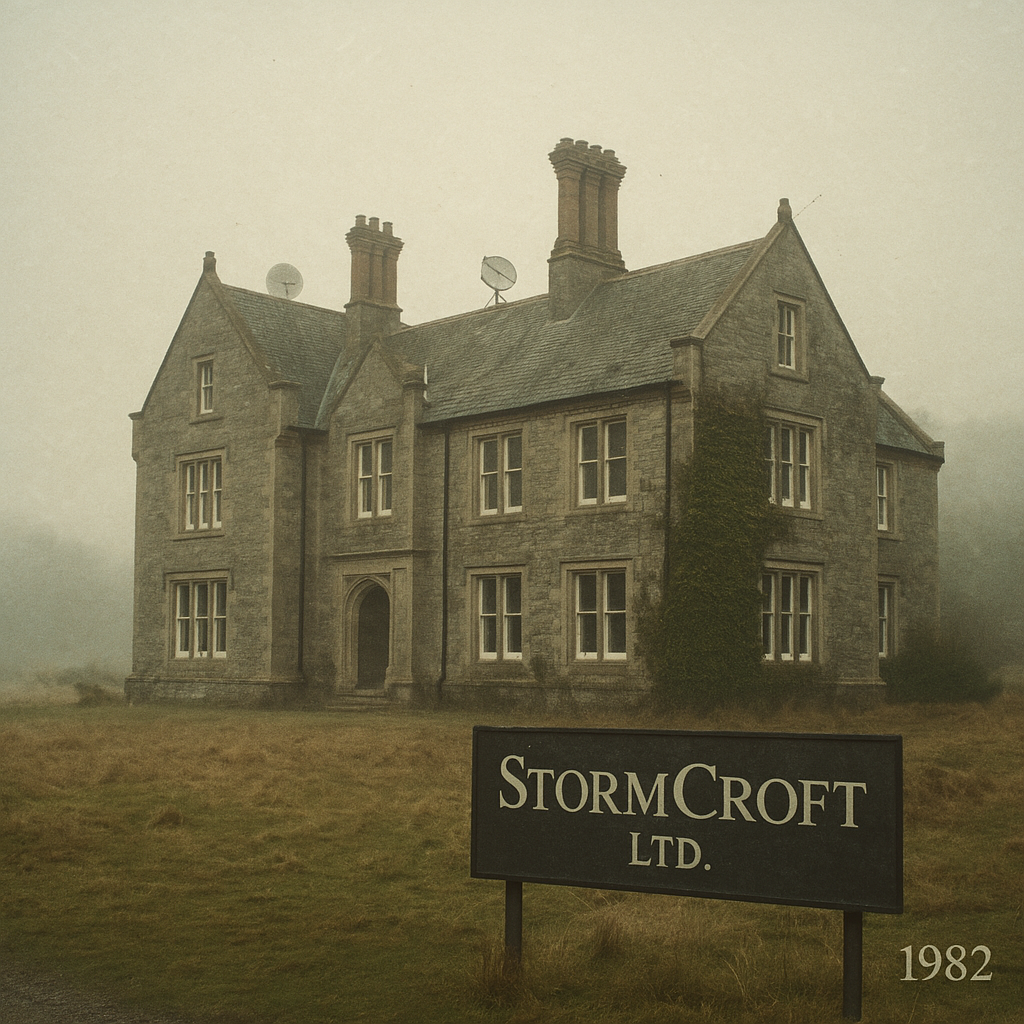
The StormCroft building still stands — barely. Once an imposing Victorian-era manor and technological think tank perched at the edge of the Dartmoor moorlands, its crumbling remains are now overgrown, wind-beaten, and sealed behind makeshift fencing erected by local authorities.
After the incident known only as The Silence, much of the west wing collapsed, reportedly from “structural fatigue.” Independent engineers visiting the site in 1985 noted that several load-bearing stone columns appeared to have melted and re-fused — as if heat-treated from the inside out. No fire was recorded. No explanation was issued.
The building’s original east entrance is now buried beneath ivy and years of rot. Entire sections of the outer wall have caved in, consumed by the surrounding moorland, and parts of the path leading up to the door have vanished under moss and stonefall. Yet, remarkably, the carved stone arch bearing the partially obscured “STORMCROFT SYSTEMS LTD” still casts a shadow at dusk, when the fog lifts long enough for it to be seen. Locals say the stone beneath the inscription is strangely warm to the touch, even in winter — and more than one hiker has claimed to hear a low humming sound when standing beneath it, as if something behind the arch were still gently breathing.
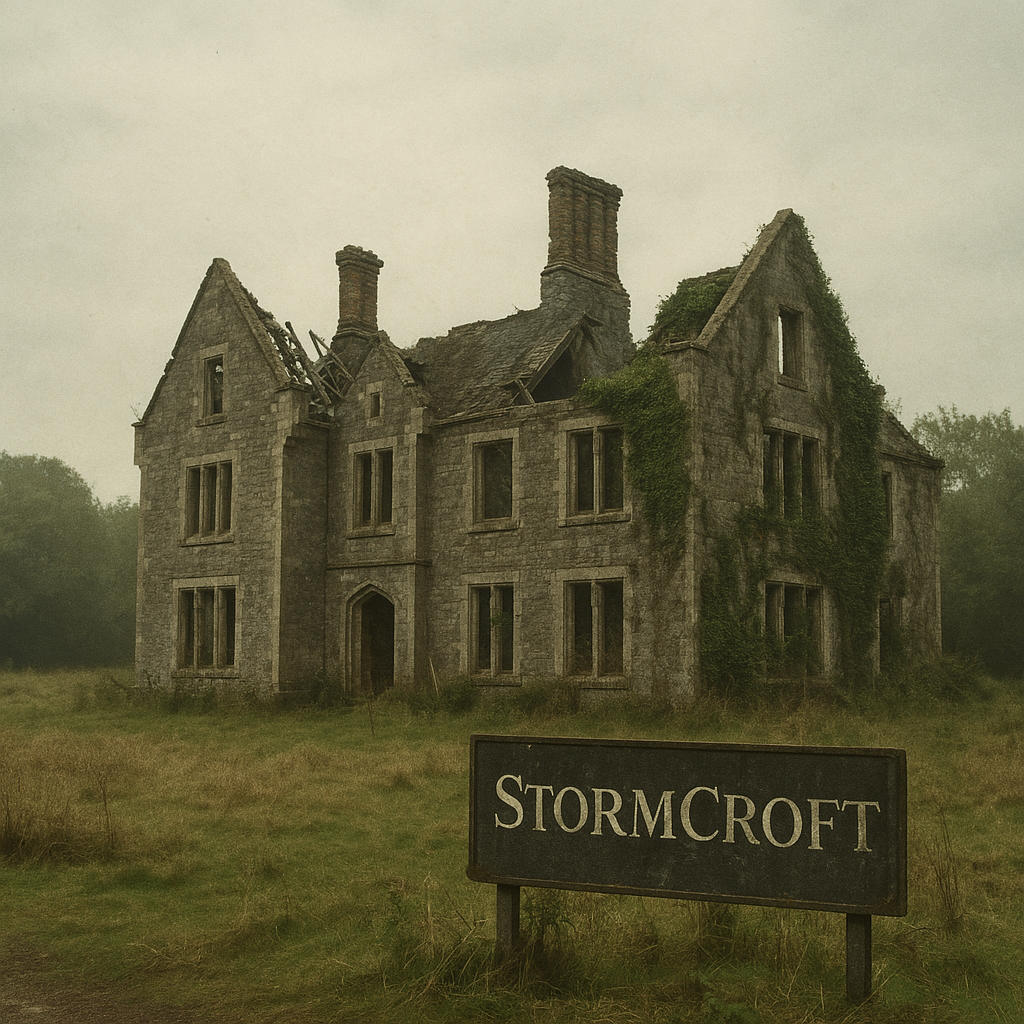
Attempts to redevelop the land have repeatedly stalled. In 1991, a survey team from a Plymouth-based commercial housing firm withdrew their bid after what their site manager described as “equipment behaving unpredictably.” Their GPS drones failed to map the internal courtyard — as though the layout of the building was changing from above.
In 2003, a group of paranormal enthusiasts attempted an unsanctioned overnight investigation. They returned after only 47 minutes. Audio recordings from that night captured looping sounds, distorted speech in reverse, and one whispered phrase repeated three times: “Don’t let them blink.”
In 2024, a local councillor proposed turning the site into a digital heritage attraction. The motion failed with a 9–1 vote. When asked to comment, one of the councillors reportedly said, “That place doesn’t want to be remembered.”
To this day, the building remains on no public register, no commercial zoning plan, and no protected heritage list. And yet it stands — as if waiting for something to resume.
The Secret Railway Link
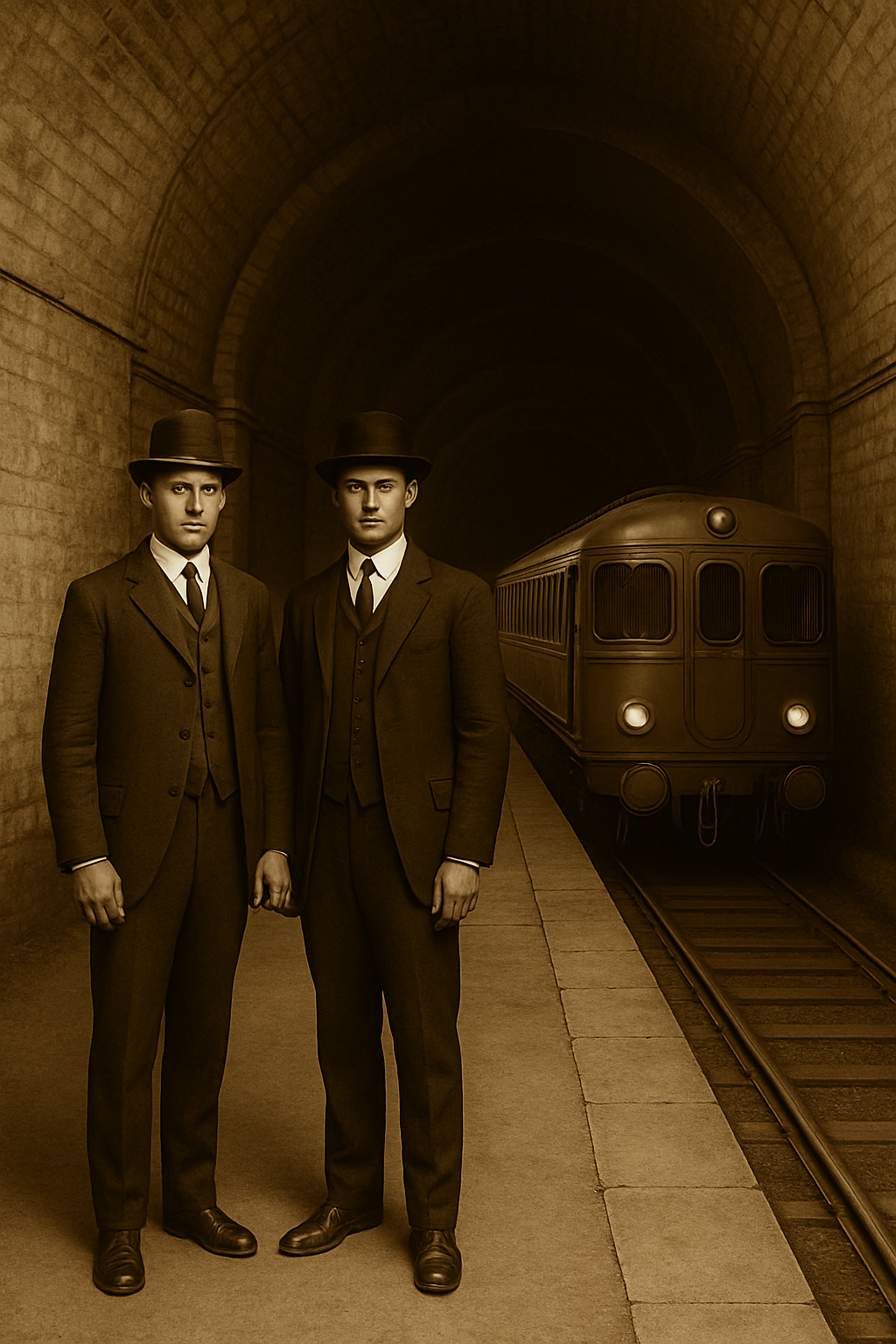
This unusually well-preserved sepia-toned photograph captures William Harrow (left) and Dr. Elias M. Cotter (right) within the lower sub-transit chamber of the StormCroft Underground Railway system. Behind them, a classified transport train rests silently on Track B–Southeast, used primarily for inter-site memory crate transfer and fog-modulated passenger operations.
Taken in March 1907, this image marks the final known collaboration between the two men before Dr. Cotter’s reassignment to the CroftNet Interference Unit. The brass rail lamps were reportedly dimmed shortly after the photograph was taken due to a resonance breach near the tunnel mouth. Harrow’s expression, as noted in the surviving memo, was said to have “reflected something only the train had whispered.”
The location, now sealed, was rediscovered briefly in 1982 before being classified “non-returnable access.”
The Princetown Branch Line officially closed on 3 March 1956. But evidence suggests its final journey was not the end of the track — at least, not underground.
The Princetown and Dartmoor Railway Company, originally chartered in the 1870s to serve the quarries and prison, operated several miles of narrow gauge lines through some of Devon’s most inhospitable terrain. What few realise is that in 1919, a proposal was filed to create a “subterranean armoured access point” beneath the Moorland Plateau. Though dismissed at the time, blueprints matching this proposal were rediscovered in a Ministry of Transport archive in 1992, filed under an annex labelled: “Private Infrastructure – Storm Security Zone.”
Following the 1922 absorption of the Princetown company by the Great Western Railway (GWR), several unrecorded modifications appear to have been made to existing tunnels — including the suspected “North Spur,” a low-clearance section no longer visible on official maps. The last confirmed sighting of rolling stock using this spur occurred in 1954. The line was deemed commercially “non-viable” two years later.
But StormCroft’s internal files suggest otherwise.
Personnel logs list regular “Material Intake” shipments as late as 1983 via Entry Point T-North, always annotated with the same remark: “GWR Access Confirmed – Do Not Broadcast Arrival.”
In interviews with former GWR employees conducted by amateur rail historian Clive Farham in the 1980s, several spoke of a “sealed section” beyond the Princetown terminus. One described a locomotive being “swallowed by the ground.” Another claimed to have been paid extra “to keep the engine warm at 3 a.m. with no carriages attached.”
While much of this lore remains unverified, one chilling detail stands out: in 1984, just weeks after The Silence, a retired railway inspector anonymously submitted a letter to a local paper. It read:
“I was there when they drove it through. I heard it hum before it moved. That wasn’t coal doing that.”
To this day, local hikers still report hearing the sound of a distant engine whistle beneath their feet — even though no line has run in over sixty years.
The Men in the Photograph:
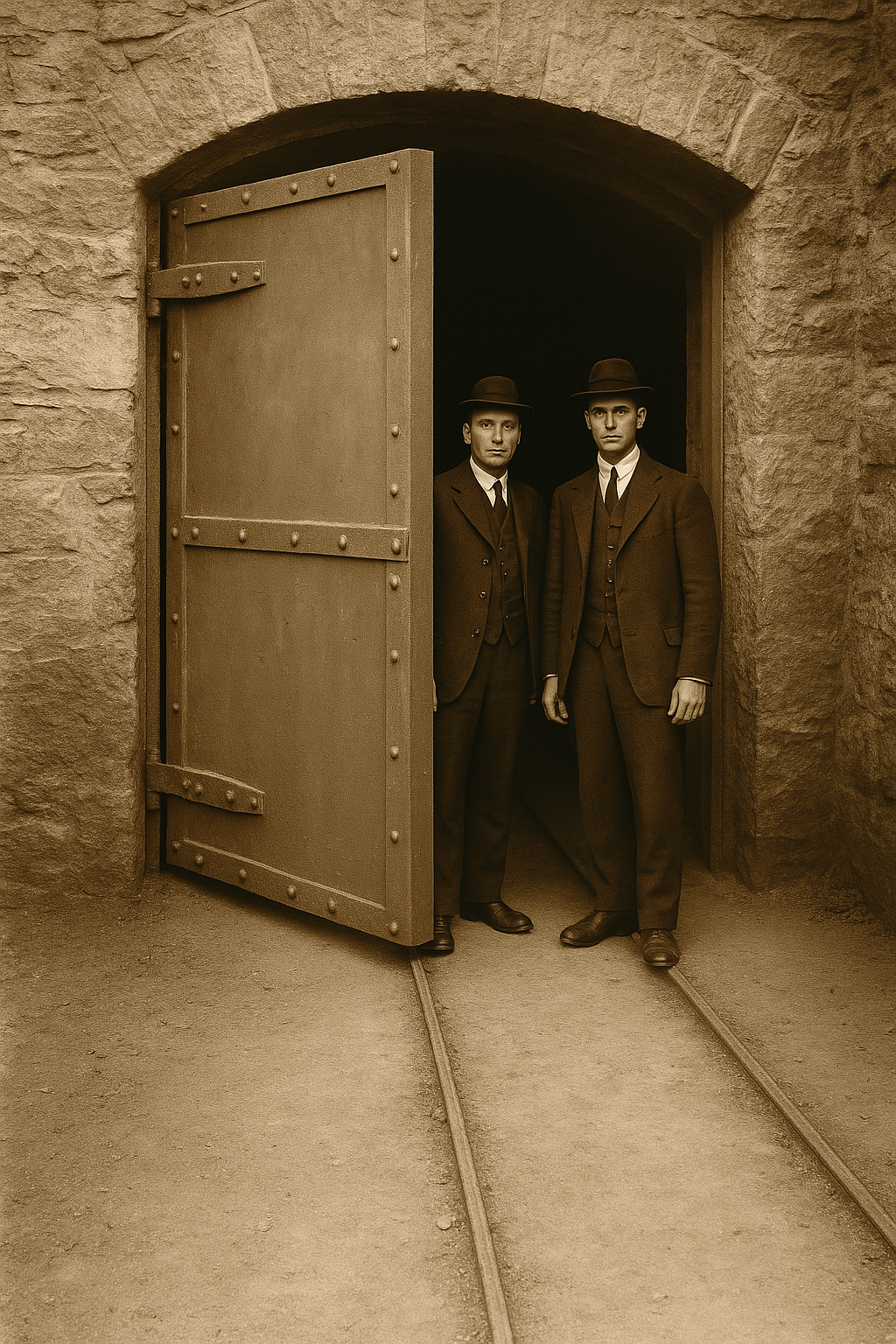 Tunnel Entrance Surveillance – Croft Spur Access, 1922. Captured in early 1922, this rare sepia-toned photograph shows the semi-open entrance to what was later designated as the “Croft Spur” — a secret underground rail access point beneath the moorlands. Two men, silhouetted yet clearly visible, stand just beyond the threshold of the reinforced steel pressure door. The area was not open to public knowledge and does not appear on any GWR route maps of the time.
Tunnel Entrance Surveillance – Croft Spur Access, 1922. Captured in early 1922, this rare sepia-toned photograph shows the semi-open entrance to what was later designated as the “Croft Spur” — a secret underground rail access point beneath the moorlands. Two men, silhouetted yet clearly visible, stand just beyond the threshold of the reinforced steel pressure door. The area was not open to public knowledge and does not appear on any GWR route maps of the time.
-
William Harrow (left): Former senior locomotive technician with the Princetown and Dartmoor Railway Company, reassigned under classified contract following the 1922 GWR acquisition. Harrow was reportedly the only engineer trusted to manually override the tunnel’s pressure lock mechanism. Known for his precise silence and refusal to enter buildings with clocks.
-
Dr. Elias M. Cotter (right): Officially listed as a “structural inspector,” Cotter’s name does not appear in any public GWR payroll or civil engineering register. Internal StormCroft files reference him under the project codename “Witness B”. Anecdotal evidence links Cotter to early signal research for a military-adjacent firm called Lytewell Dynamics.
Post-Retirement Disappearance:
The two men reportedly retired together to a remote stone cottage near Burrator Reservoir in 1938. Locals say the home emitted strange high-pitched sounds on foggy nights. Neither man was seen again after the winter of 1941. In 1963, surveyors found the property abandoned, table set for two, clock stopped at 3:41 a.m., and a note on the fireplace mantle:
“We didn’t close it. It closed behind us.”
